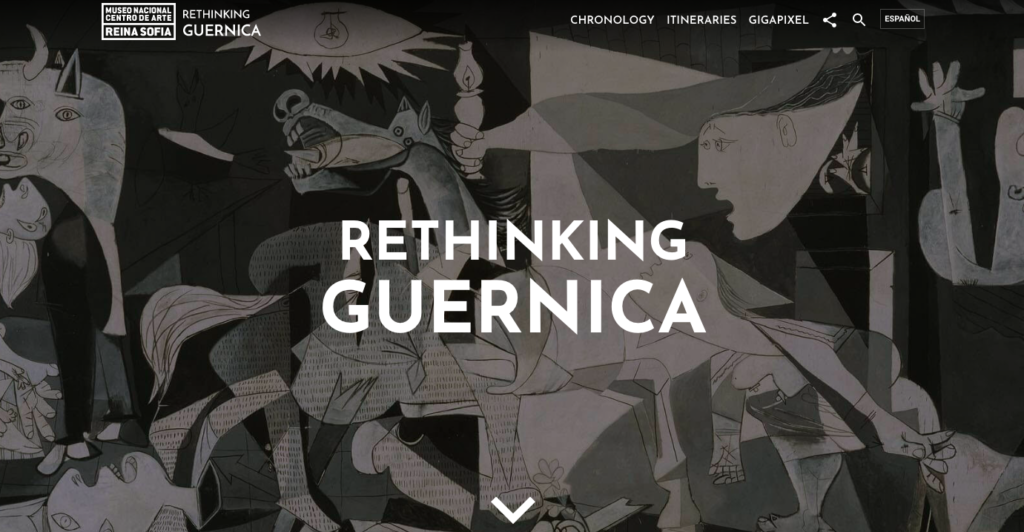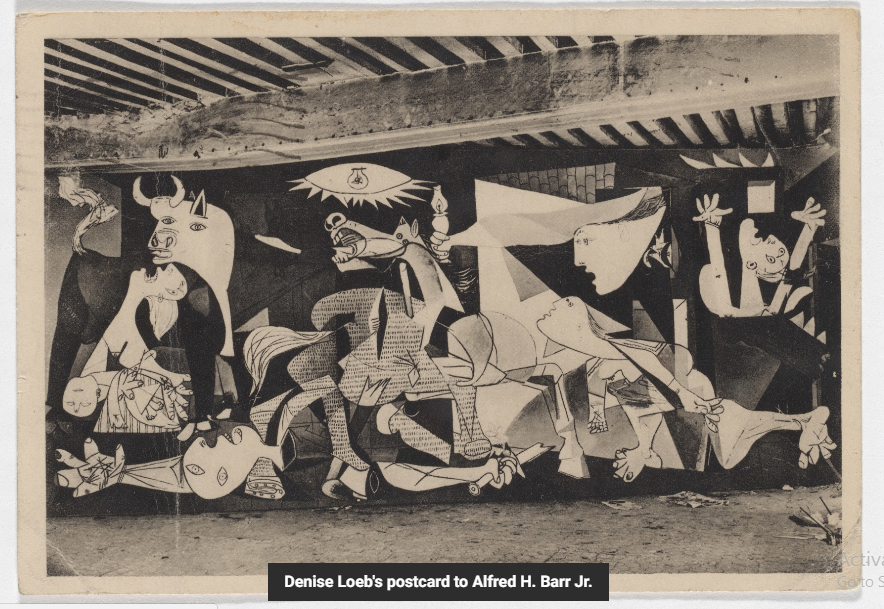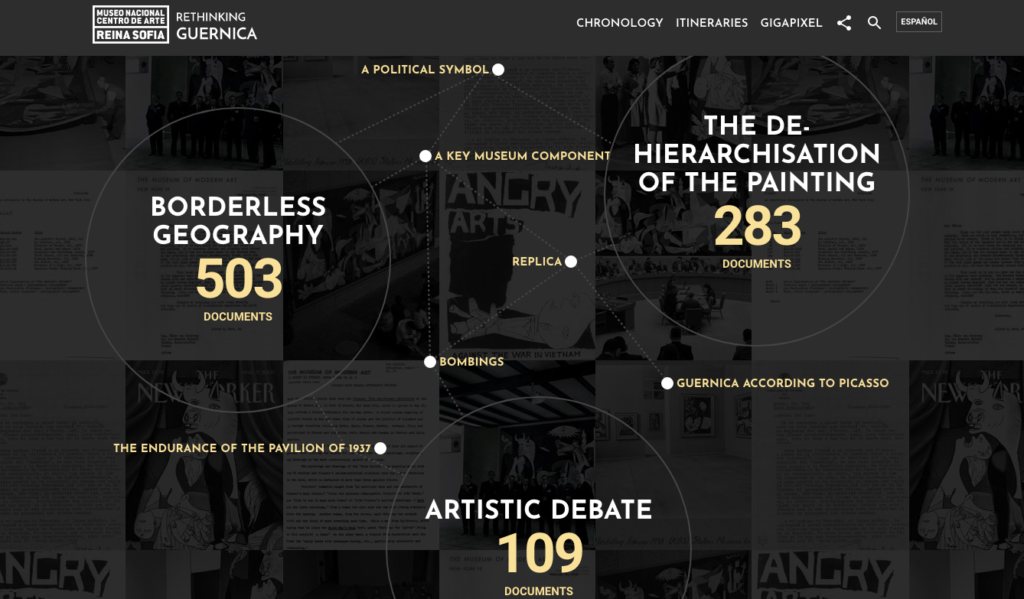Art World
You Can Now Relive the Harrowing Story of Picasso’s Guernica Online, Thanks to the Reina Sofía
The website pools over 2,000 documents about Picasso’s iconic work.

The website pools over 2,000 documents about Picasso’s iconic work.

Naomi Rea

Madrid’s Museo Reina Sofía has launched an online archive called “Rethinking Guernica,” featuring around 2,000 documents and images, to mark the 80th anniversary of Picasso’s great, anti-war painting created in 1937 after the bombing of the Basque city during the Spanish Civil War.
The €178,000 ($210,000) website project follows on from the exhibition “Pity and Terror: Picasso’s Path to Guernica,” which ran from April 5 to September 4 and attracted around 680,000 visitors to the Madrid museum of Modern and contemporary art, which is the permanent home of the painting.
Available in English and Spanish, the site brings together online records from 120 public and private archives, libraries, museums, institutions, and national and international agencies, including the Musée Picasso in Paris and New York’s Museum of Modern Art (MoMA) as well as Spain’s national archive in Madrid.
Picasso only created one, small painting before Guernica that directly responded to the war in Spain, although he followed news of the conflict from Paris. (That painting, which he gave to his lover Dora Maar and was included in “Pity and Terror,” sold at Christie’s New York for more than $16 million on November 13.) Picasso’s public silence was broken by the air raid by Franco’s German- and Italian-backed forces, which gave the pro-Republican artist a subject for the monochrome, mural-sized painting commissioned for the Spanish Pavilion at Paris’s World Fair in 1937.

Postcard of Guernica, mailed in 1937 to MoMA Director Alfred Barr and his wife by Denise Loeb © 2017. Digital image, The Museum of Modern Art, New York/Scala, Florence.
After it was exhibited in Paris, raising funds for Spanish refugees, it travelled to London’s Whitechapel Art Gallery and across Scandinavia before heading to the US in 1939. It found a home in New York’s Museum of Modern Art during World War II, where it remained until after Franco’s death. After protracted negotiations, which are represented in the online archive, the painting finally travelled to Spain in 1981. It moved to its new home, the Reina Sofía, when the museum opened in 1992. In the years since it has become a powerful political emblem, which the director of the Reina Sofía, Manuel Borja-Villel described as a “symbol of exile, icon of modern art and emblem of the transition,” to El Mundo.
The main draw to the site is the “Gigapixel” section, which lets you explore high resolution images of the work exposed through different photographic techniques such as visible light, ultraviolet, infrared and radiography. These let you examine the artistic details of the painting up close, making visible Picasso’s alterations to the work as well as the damage it has suffered over the years such as in cracks and spots. The archive features an interactive timeline that traces the painting chronologically from 1936 to the present day, showing key documents associated with each year. Another section, titled “Itineraries,” allows you to discover the provenance history of the work, its movements to different institutions and its political influence, through historical materials.
More than 6,000 documents were investigated in total for the project, and the remaining 4,000-odd photographs, museum documentation, and videos will be added gradually to the site.

Screen shot from the Museo Reina Sofía’s “Rethinking Guernica” website.